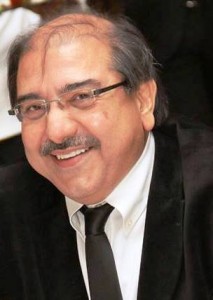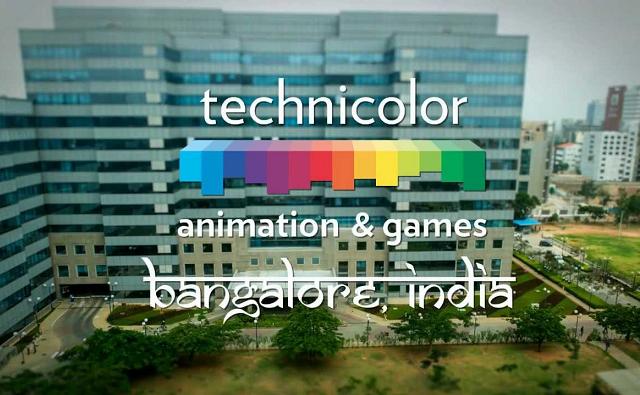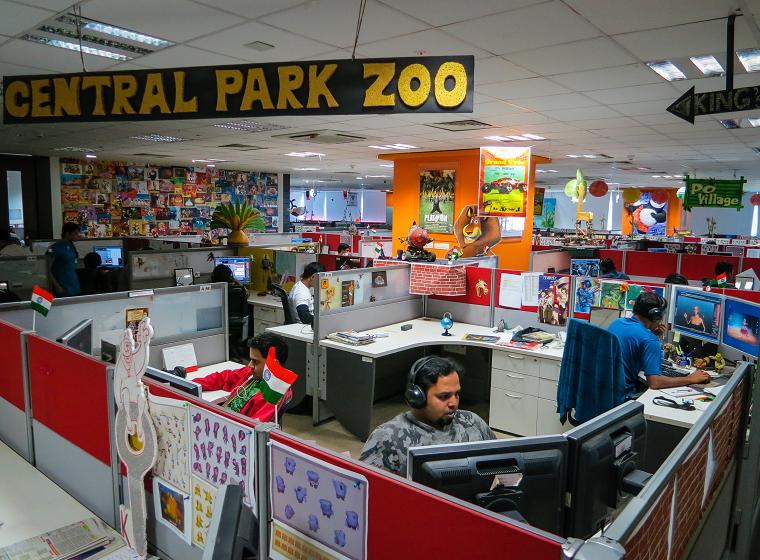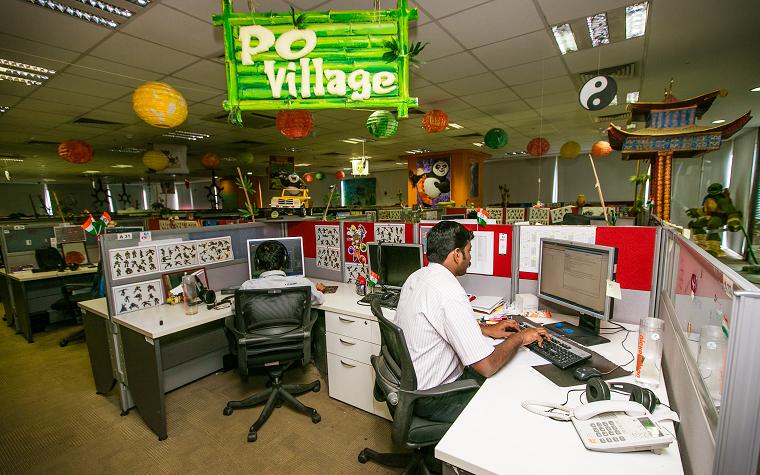
Currently spearheading Technicolor’s overall business in India, Biren Ghose has completed 5 years in the company, which has been a pioneer in the CG animation, VFX and gaming segments establishing the Bangalore hub as one of the largest studios in the world with approximately 1,700 team members.
Technicolor is also a global leader in the motion picture and ad commercial Visual Effects [VFX] space with MPC as its flagship.
Speaking exclusively to AnimationXpress.com’s Sidharth Iyer, Biren opens up about his journey in the company and his views on the Indian Animation, Gaming and VFX industry…
Excerpts:-
Q. You are completing five years in Technicolor India. Can you tell us about your journey so far?
The last five years have passed by in a collage of amazing events. The diverse accomplishments of our relatively ‘young’ Indian company seem to blend into one big ‘technicolored’ tapestry, which portrays the journey of how Technicolor India and MPC Bangalore have grown into a powerhouse in VFX, Animation and Gaming. I feel overwhelmed and privileged to have been ‘at the helm’ locally in mentoring and adding value to this evolution. Many of the dreams that our global leaders, at Technicolor LA and Paris and at MPC globally, shared with our local team in Bangalore in 2009, have come true quite remarkably during this period. The CGI industry has acknowledged our arrival as a premier digital production studio and we have become a ‘beacon’ in the Asian animation and VFX landscape. You will therefore indulge me this moment of reflection as I bask in the glory of the iconic work that our incredible artists and technicians have delivered. There are many client testimonials and kudos; a succession of repeat orders and a slew of prestigious awards to acknowledge these five years and nothing further need be said therefore!

Q. Can you mention some of the highlights over these five years?
In building one of the world’s largest CG production studios, we needed to ‘crack the code’ on multiple fronts:
Talent: India is an early stage and very much an emerging VFX/ Animation locale. This meant identifying the best potential and then training them to “world-class” standards that MPC and Technicolor deliver to their clients. While we have achieved this paradigm, our continuous expansion and the growth in technologies [4K; Stereoscopic; etc] constantly raise the bar in the imagery we need to create and perpetuate our training and skill development efforts.
Technology: In working with leaders like DreamWorks Animation, Rockstar Games, EA, Nickelodeon, Marvel, Disney, Warner Bros., Universal, Fox and many other notable clients, we need to be in “sync” with their workflows and “pipelines” and ensure a seamless execution in content production. We have therefore developed a number of production and collaborative (even proprietary) tool sets and protocols to achieve our goal.
Infrastructure: We are ‘several studios’ under one roof. Each of our businesses and dedicated units has a unique environment in terms of technology, workspace, logistics and even data centers! We deploy ‘gold standard’ solutions when it comes to hardware and software in our goal to create and deliver the best digital life experiences for the media and entertainment industry. Security is obviously key in safeguarding our physical and data environments.
Commercial Savvy: VFX and Animation are expensive content to create and hence managing costs, timelines and schedules must be done with an ‘eye on the bottom line’. We have made several clients and stakeholders proud of our record in these years. Our success comes from our ability to scale our production services ecosystem to a global execution model.
Management/Leadership: Creative leaders are not always the best commercial or production managers. However, we have ensured that a unique production culture partners and fosters artistic growth and innovation while keeping the ‘show on the rails’. We invest in our leaders as we do in our creative team. I could safely say that my task has been to build multiple leadership teams!

Q. What are your plans for the studio in the future?
It is not our practice to talk about the forthcoming years in terms of numbers or projects that are currently in our pipeline. It is fair to say however, that we will certainly pursue some winning strategies for which we are already known in the marketplace:
Migrating towards higher quality projects: We have an unparalleled creative and production team that is focused on developing truly unique and creative CGI content. It is amazing how even TV animation aesthetics and ‘tech spec’ has become sophisticated with the advent of HD and now 4k and stereo 3D etc… This means the image quality (and infrastructure) needs to be geared to a substantially higher level of input and output. Our feature film work, direct-to-DVD movies and high end TV animation are all indicative of this trend.
Furthering the successful ‘Dedicated Unit’ model of business: Similar to the long standing DreamWorks Dedicated Unit @ Technicolor, we are extending this model of business to our other global clients as well. Rockstar Games, a publisher of the iconic GTA 5 is another example of a dedicated unit within our studios.
IP development: We have become a ‘fountain’ for creative development by helping our global team partner with creators to develop intellectual property. To my knowledge, this phenomenon of creating ‘Hollywood’ level original content has never been done in India before! As an example, ‘Atomic Puppet’, an animated series for children, co-developed with Canada’s Mercury Filmworks and France’s Gaumont Animation is an IP in production.
 Q. How do you see the situation for the Indian Animation industry?
Q. How do you see the situation for the Indian Animation industry?
Over the last few years, the global Media and Entertainment industry has undergone significant technological transformation in content creation and delivery. As a result, India is now progressively becoming an “active ingredient” in the ‘global production recipe’. There has been an incredible increase in the number and quality of projects undertaken by local talent/ artists for international studios. In fact, according to the FICCI-KPMG 2014 report, the Indian Animation industry is expected to touch around INR 120 billion (USD 2 billion) in 2018, which will approximately be eight per cent of the overall global industry. There was a time less than a decade ago when India was not even a single digit!
Additionally, the recent Union Budget 2014 announced by India’s Finance Minister provisioned the set up of a National Centre for Excellence in Animation, Gaming and Special Effects, which is a “shot in the arm” for the industry. I am glad to be an invitee to the committee that engages on this project at the national level. The need of the hour is to leverage this opportunity and work ‘hand-in-hand’ with the Government and Academia to ensure that “standards and best practices” are set and implemented to increase India’s global share. Locally, ABAI (a trade body for the creative industries) of which I am the elected President, is working with the Karnataka government to implement the AVGC policy to develop the digital creative ecosystem in the state and develop links with several international countries.
The focus moving forward should be a continued impetus to developing local talent and providing mentorship and seed funds to start-ups.
Q. What do you feel are the benefits of some of the policies being announced by the Central and State governments and how would that benefit Technicolor?
The recent policies/announcements made by the Central and State governments augur well for the fledgling AVGC industry in India. These policies address key factors such as benchmarking the quality of local talent available in the country, elevating standards of education in animation and ensuring start ups in VFX and Gaming have technical and marketing events.
Technicolor and MPC, as of course all the other players, will benefit if the “fruits” of these policies provide a better ‘supply’ of creative skill sets thereby reducing the burden of training in house from a ‘zero-level’!
The Indian Prime Minister, Narendra Modi has visited Hollywood to develop a stronger “bridge” between Hollywood and India. Technicolor India becomes a prime example of what such a strategy can achieve.
